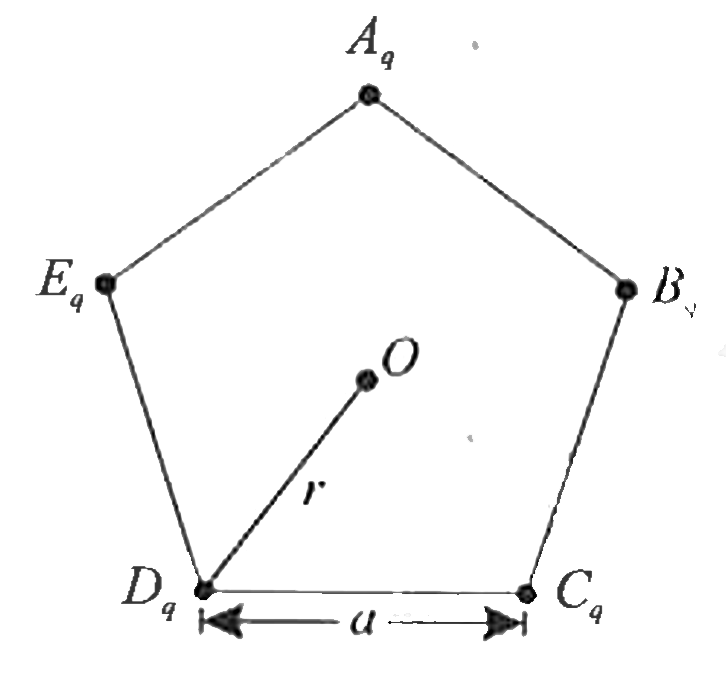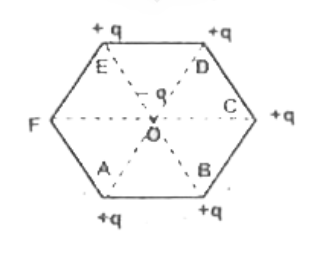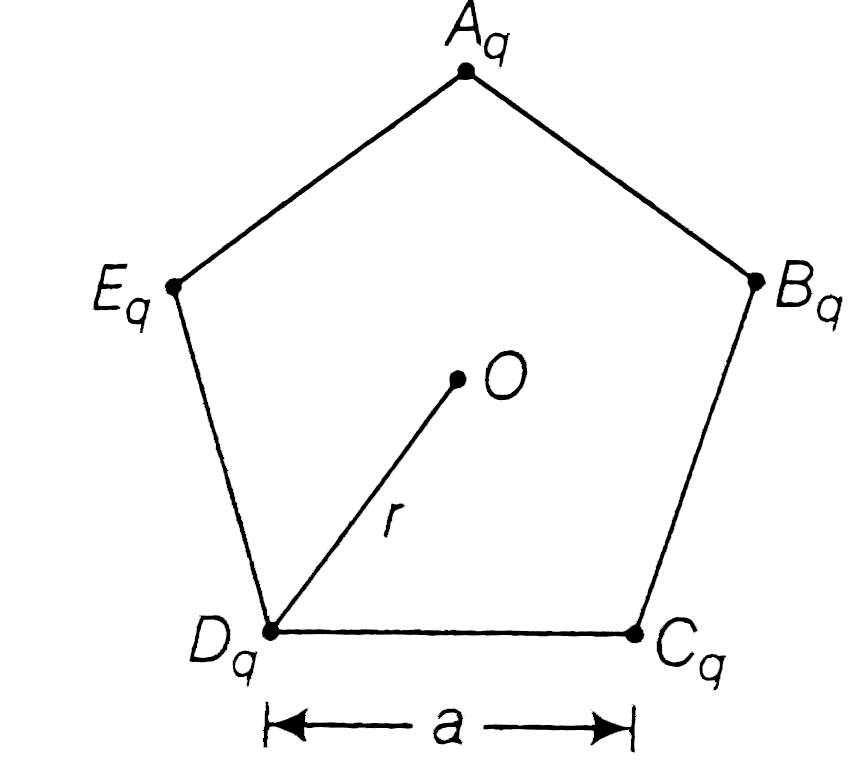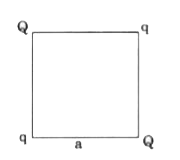Five charges, q each are placed at the corners of regular pentagon of side a as shown in the figure.
How would your answer be affected, if pentagon is replaced by n-sided regular polygon with charged q at each of its corners ?
When pentagon is replaced by n-sided regular polygon with charge q at each of its corners , the electric field at O would continue to be zero as symmetricity of the charges is due to the regularity of the polygon. It does not depend on the number of sides or the number of charges.
Similar Questions
Five charges, q each are placed at the coreners of a regular pentagone of side.

(a) (i) What will be the electric field at O, the centre of the pentagon ?
(ii) What will be the electric field 0 if the charge from one of the corners (say A) is removed ?
(iii) What will be the electric field at 0 if the charge q at A is replaced by −q ?
(b) How would your answer to (a) be affected if pentagon is replaced by n-sided regular polygon with charge q at each of its coreners ?
View SolutionFive charges, q each are placed at the corners of a regular pentagon of side a. (Refer the adjoining figure)
(a) (i) What will be the electric field at O, if the centre of the pentagon?
(ii) What will be the electric field at O if the charge from one of the corners (say A) is removed?
(iii) What will be the electric field at O if the charge q at A is replaced by -q?
(b) How would your answer to (a) be affected if pentagon is replaced by n-sided regular polygon with charge q at each of its corners?

View Solution
Knowledge Check
Five point charges each of charge + q are placed on five vertices of a regular of side h as shown in the figure. Then
Athe forces on (-q) at O due to charges +q at A and D are balanced.Bthe forces on (-q) due to charges at D and E are balanced.CThe resultant force on −q at O is 14πε0q2h2 along OE.DThe resultant force on - q at O is 14πε0q2h2 along OC.Five point charge (+q each) are placed at the five vertices of a regular hexagon of side 2a.what is the magnitude of the net electric field at the centre of the hexazon?
A14πε0qa2Bq2πε0a2C5q4πε0a2D5q2πε0a2
Five charges, q each are placed at the corners of a regular pentagon of side a. (Refer the adjoining figure)
(a) (i) What will be the electric field at O, if the centre of the pentagon?
(ii) What will be the electric field at O if the charge from one of the corners (say A) is removed?
(iii) What will be the electric field at O if the charge q at A is replaced by -q?
(b) How would your answer to (a) be affected if pentagon is replaced by n-sided regular polygon with charge q at each of its corners?

View SolutionFive point charges each of charge +q are placed on five vertices of a regular hexagon of side h as shown in the figure. Then

View SolutionFive equal charges each of value q are placed at the corners of a regular pentagon of side a. The electric field at the centre of the pentagon is

View SolutionFive equal charges each of value q are placed at the corners of a regular pentagon of side a. The electric field at the centre of the pentagon is

View SolutionFive charges , q each are placed at the corners of a regular pentagon of side.

(a) (i) What will be the electric field at 0, the centre of the pentagon?
(ii) What will be the electric field at 0 if the charge from one of the corners (say A) is removed?
(iii). What will be the electric field at 0 if the pentagon is replaced by n-sided regular polygon with charge q at each of its corner?
View SolutionFour point charges Q.q Q and q are placed at the corners of a square side 'a' as shown in the figures.

Find the resultant electric force on a charge Q,
View Solution
